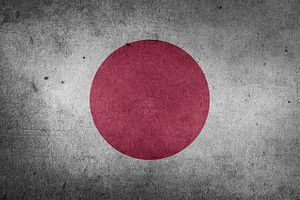If you thought that QAnon – the baseless conspiracy theory purporting that a global cabal of satanic pedophiles is plotting against former U.S. President Donald Trump – was an exclusively American phenomenon, you’d be wrong. Before Twitter purged 70,000 QAnon-related accounts in the wake of the Capitol siege in Washington D.C., one of the most influential promoters of the conspiracy theory was the Japanese Twitter user Eri Okabayashi. A self-described university graduate from “a medium-sized city in Japan,” Okabayashi says she learned English by watching American television programs. According to her now-deleted Twitter bio, she puts her English knowledge to use as the sole Japanese translator for QMap, an aggregation website of QAnon propaganda, and as the founder of QArmyJapanFlynn, a local chapter of the QAnon conspiracy cult.
Her account boasted more than 80,000 followers at its peak, and while those numbers were almost certainly inflated by fake accounts, Okabayashi’s influence on the burgeoning Japanese movement is indisputable. While QAnon is believed to have found traction in over 70 countries, Japan hosts “one of its most active networks outside the U.S.,” according to Bloomberg. This popularity is in large part due to Okabayashi’s efforts, which have enabled the Trump-centric conspiracy to adopt local features, acquiring broader appeal.
The components of QArmyJapanFlynn are too numerous to list but include: the eponymous idolization of Michael Flynn, Trump’s former national security advisor; the suspicion that the Japanese government was infiltrated by ethnic Koreans; the claim that the imperial family was replaced by body doubles; and the assertion that both the atomic bombings of Hiroshima and Nagasaki and the Fukushima disaster were elaborate cover-up operations.
Racial and gender issues have also merged with the QAnon stream, as seen in the United States. Okabayashi told Bloomberg News that she “was convinced that a country that does not allow women in their twenties of childbearing age to focus on childbirth and child rearing will eventually die.” (Despite recent gains, Japan remains behind its international peers in gender equality.) Okabayashi expressed xenophobic sentiment, and like other Trump supporters, presumably embraces his harsh, anti-Chinese rhetoric. She is also a product of her time.
When Trump’s crass charisma and shameless penchant for lying merged with the unprecedented fear caused by the pandemic, a perfect storm developed. Millions of people were forced to isolate at home, alone with the internet. Easy access to fringe outlets provided an on-ramp for radicalization. These conditions exacerbated resentment toward the privileged elite, or jokyu kokumin in Japanese, and intensified the storm.
“I see this group as being quite similar to the Aum Shinrikyo cult back in the early 1990s,” Jun Okumura, a visiting researcher for the Meiji Institute for Global Affairs, told DW. “It appears that a small minority of people have their minds wired to accept these outlandish theories in spite of all the evidence and knowledge that is put directly in front of them,” Okumura explained.
Okumura is not the only person to draw a connection between QAnon and Aum Shinrikyo, the doomsday cult behind the 1995 Tokyo subway sarin gas attack. Matt Alt, writing for The New Yorker in September last year, presciently used the analogy as a cautionary tale. Shoko Egawa, a professor of cross-cultural studies at Kanagawa University, further echoed the parallel after the Capitol siege on January 6. The similarities between the two movements are uncanny.
Five years before the Tokyo subway attack, the charismatic, egomaniacal leader of Aum Shinrikyo, Shoko Asahara, ran for public office. Like Trump in 2020, Asahara lost that election but refused to concede, falsely claiming voter fraud. Asahara’s dangerous cult was ignored by mainstream society, but aided by the power of the nascent internet, Aum Shinrikyo fostered grievance and resentment while amassing power and increasing membership. Eventually, Asahara declared war against the “world shadow government” and instigated the attack on the subway system.
QAnon, just like Aum Shinrikyo before it, is a pseudo-religious terrorist cult. It must be taken seriously. The crackdown on Twitter, Facebook, Instagram, and other websites is a promising start. Without the amplification provided by lax social media platforms, the staying power of QAnon, particularly in Japan, is an open question. The Twitter account for Okabayashi has been locked since January 21, probably indefinitely. Okabayashi’s revenue stream from Patreon, a crowdfunding website, has also been cut off.
While it’s doubtful that practitioners of QAnon will go quietly into the night (experts worry that adherents could foment vaccine skepticism), without the spotlight of social media, they will at least be relegated to bumbling around in the dark.
Alex Silverman is a freelance writer with bylines in the Kyoto Journal, The Key Reporter, and Japan Travel, among others.

































